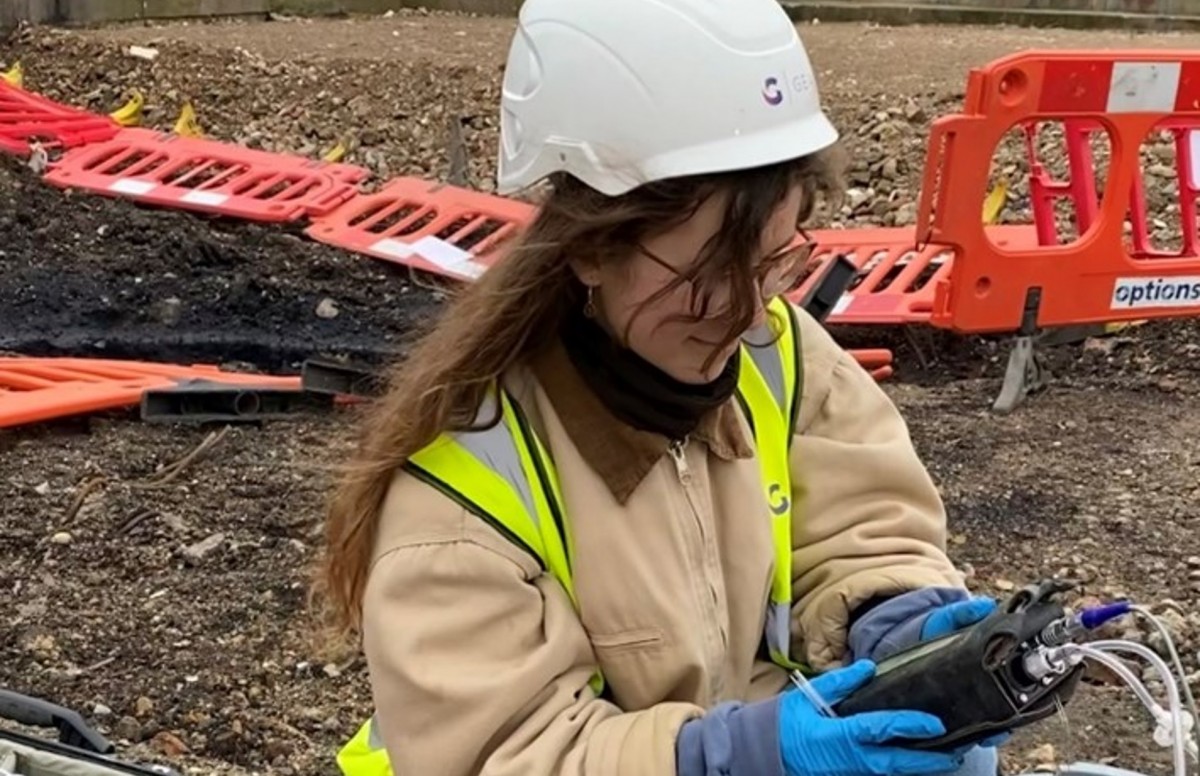The 20-Second Trick For Geotheta
The 20-Second Trick For Geotheta
Blog Article
Some Of Geotheta
Table of ContentsRumored Buzz on GeothetaThe smart Trick of Geotheta That Nobody is Talking AboutOur Geotheta PDFsHow Geotheta can Save You Time, Stress, and Money.Some Ideas on Geotheta You Should Know

They carry out website examinations, accumulate examples, perform research laboratory examinations, and evaluate information to evaluate the viability of the ground for construction projects - Geo Tech Engineer. Based upon their searchings for, geotechnical designers supply referrals for structure layout, incline security, keeping structures, and mitigation of geotechnical risks. They work together with other specialists, such as architects, architectural engineers, and construction teams, to guarantee that geotechnical considerations are integrated right into the overall project layout and execution
By analyzing the habits and residential or commercial properties of soil and rock, they can recognize possible geotechnical hazards such as landslides, dirt negotiation, or slope instability. Their competence aids stop failings or crashes that might endanger lives and residential property. Right here are some comprehensive duties and duties of a geotechnical engineer: Website Investigation: Geotechnical engineers conduct website investigations to collect data on subsurface conditions.
They interpret the data to understand the residential properties and habits of the soil and rock, including their strength, permeability, compaction attributes, and groundwater conditions. Geotechnical Evaluation and Style: Geotechnical engineers analyze the information accumulated during site investigations to evaluate the stability and viability of the site for building and construction tasks. They execute geotechnical estimations and modeling to examine elements such as birthing capability, settlement, incline stability, lateral planet pressures, and groundwater flow.
Geotheta for Dummies
Structure Style: Geotechnical designers play a vital function in making foundations that can safely sustain the intended framework. They evaluate the dirt conditions and tons requirements to determine the ideal foundation type, such as superficial structures (e.g., grounds), deep foundations (e.g (https://www.imdb.com/user/ur185987626/?ref_=nv_usr_prof_2)., heaps), or specialized strategies like dirt enhancement. They take into consideration elements such as negotiation restrictions, bearing capacity, and soil-structure communication to establish ideal structure layouts
They review building and construction plans, monitor website activities, and perform field evaluations to validate that the style recommendations are adhered to. If unanticipated geotechnical issues arise, they analyze the scenario and offer referrals for remediation or changes to the style. Threat Evaluation and Reduction: Geotechnical designers evaluate geotechnical hazards and dangers related to the job site, such as landslides, liquefaction, or soil disintegration.

Cooperation and Communication: Geotechnical designers work very closely with other specialists associated with a job, such as engineers, structural designers, and building teams. Effective interaction and collaboration are essential to incorporate geotechnical factors to consider into the total project style and building and construction process. Geotechnical designers offer technological proficiency, response questions, and guarantee that geotechnical needs are met.
Getting My Geotheta To Work
Below are some kinds of geotechnical engineers: Structure Engineer: Structure engineers concentrate on creating and examining foundations for structures. They analyze the soil problems, lots requirements, and website attributes to identify the most ideal structure type and style, such as shallow structures, deep structures, or specialized techniques like pile structures.
They assess the aspects affecting incline security, such as soil properties, groundwater conditions, and incline geometry, and create methods to prevent slope failures and mitigate risks. Quake Designer: Earthquake designers focus on examining and developing frameworks to endure seismic pressures. They evaluate the seismic danger of a website, examine soil liquefaction capacity, and develop seismic design standards to make certain the safety and strength of frameworks throughout quakes.
They carry out field screening, accumulate examples, and assess the accumulated information to define the dirt homes, geologic formations, and groundwater conditions at a website. Geotechnical Instrumentation Engineer: Geotechnical instrumentation designers concentrate on tracking and gauging the habits of soil, rock, and structures. They mount and maintain instrumentation systems that check factors such as soil settlement, groundwater levels, incline movements, and architectural variations to evaluate efficiency and provide early cautions of possible problems.
Geotheta for Beginners
They perform examinations such as triaxial examinations, debt consolidation examinations, direct shear tests, and permeability examinations to collect information for geotechnical analysis and design. Geosynthetics Designer: Geosynthetics engineers specialize in the design and application of geosynthetic products, such as geotextiles, geogrids, and geomembranes. They use these materials to enhance dirt stability, enhance inclines, provide drain options, and control disintegration.
They often tend to be investigative individuals, which means they're intellectual, introspective, and curious. They are interested, systematic, reasonable, analytical, and logical. Some of them are also social, meaning they're kind, generous, participating, person, caring, valuable, empathetic, sensible, and pleasant - Tailings Engineer.
In the office environment, geotechnical designers make use of specialized software program tools to execute estimations, produce layouts, and analyze information. They prepare reports, testimonial project specs, communicate with clients and group members, and coordinate project activities. The workplace setting provides a favorable environment for study, analysis, and collaboration with other specialists included in the task.
The Main Principles Of Geotheta
They often visit job websites to perform site examinations, assess geotechnical problems, and gather data for analysis. These check outs involve traveling to different places, sometimes in remote or difficult surfaces. Geotechnical engineers may do dirt sampling, conduct tests, and monitor building tasks to make certain that the geotechnical facets of the task are being carried out appropriately.
Geotechnical designers additionally operate in specialized geotechnical laboratories. In these facilities, they carry out experiments, carry out tests on dirt and rock samples, and assess the design properties of the products. Geotechnical laboratory engineers function thoroughly in these settings, handling screening equipment, operating tools, and taping data. They work together with other lab personnel to make certain accurate and trustworthy screening outcomes.
Report this page